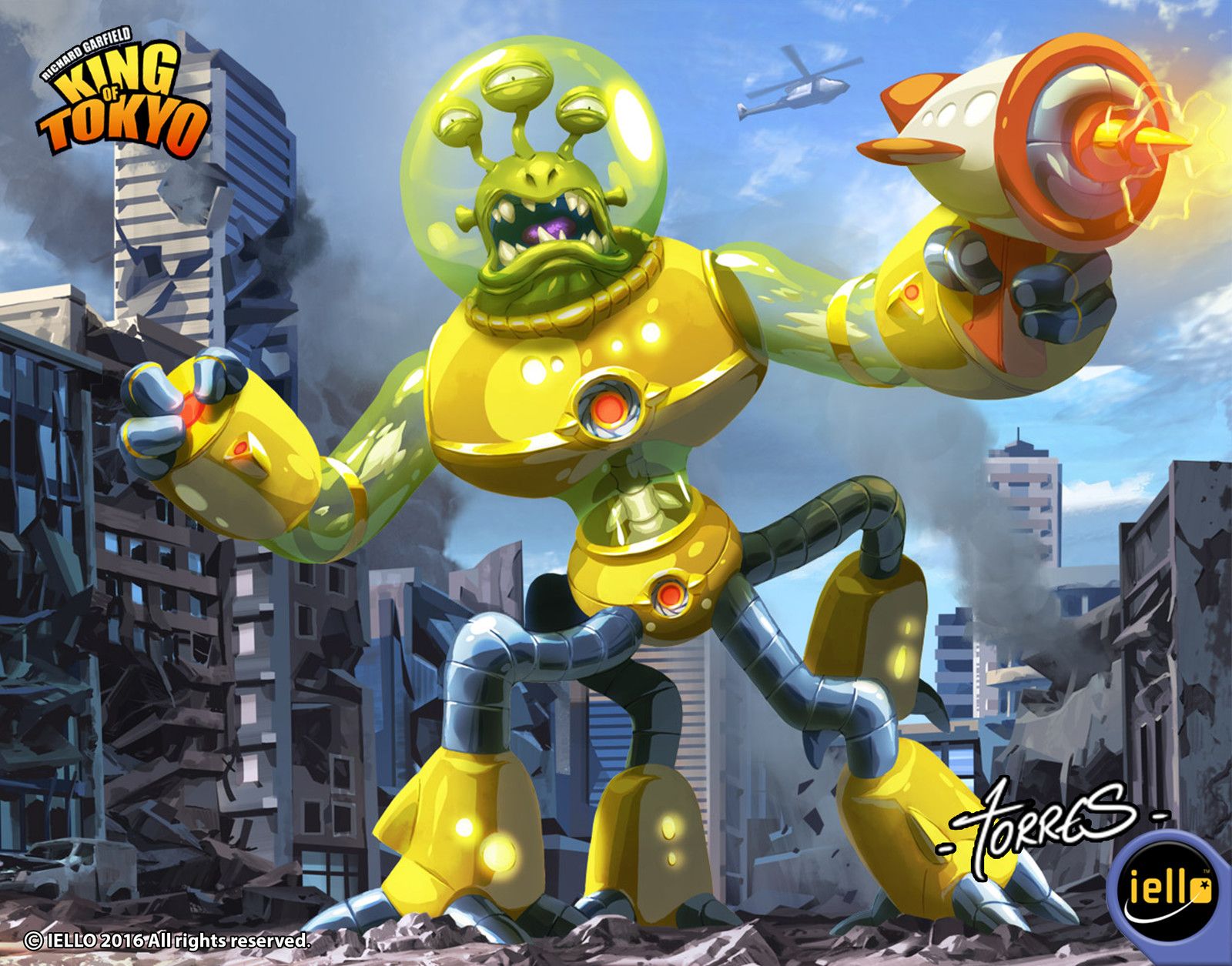King of Tokyo is a competitive dice-rolling game in which the players collect victory points and attack other players to become the monster in control of Tokyo. Playing this game, I found it created an interesting balance between an embodied experience of being a classic monster taking over the metropolis and a social/strategic approach to play. The game constructs a Godzilla-like narrative with its art – a colorful but dark cartoonish style recalls over-the-top cinematic presentations of giant creatures threatening the world’s cities, and players play as one of several different characters who reflect this image on large character cards in front of scenes of destruction. The character tokens are also very large in comparison to the small cityscape board that they stand atop, adding a sense of bird’s-eye scale as though the player is a towering threat. Despite the evident nondiegetic elements of dice, victory points, and health wheels, there is a definite mimetic element of play, contributing to a theme of dramatic power and cinematic battle.
At the same time, the mechanics and encouraged playstyle are more strategic, and diverge from the constructed emotional experience of Godzilla-like rampage and competition. The state of the character is contained in discrete values, making balancing these values and trying to win into a game of numbers and calculations. A turn is composed of several deliberate decisions, and there is no time limit or way for other players to interact outside of their own turn. The game also features dice rolls and the choice of rerolling several times. While this introduces an element of alea, the option to reroll turns it largely into a strategic decision based on the “input” of the results of the first roll, and the luck factor is greatly reduced with three rerolls available. Cards also had diegetically related titles and art, but as a player I found myself only paying attention to their strategic effects and not their place in the narrative. The main gameplay felt like a series of strategic decisions with time to think each one out, and didn’t quite match the dramatic premise that the game’s narrative offers.
That said, I don’t think that this is necessarily an issue that makes the game less fun to play. Ludonarrative dissonance is a term often used to describe games where the narrative told by the story (or in this case, the premise, art, and specific language used) is at odds with the narrative told by gameplay, and I don’t think King of Tokyo is an example of this. Instead, the gameplay and story combine to tell a new narrative. While the strategic gameplay is not fitting to the typical narrative of giant monsters wrecking metropolises, it does tell a new story of monsters vying in multilateral conflict for control of the city. The monsters are now not just rampant agents of destruction, but also calculating opponents with a fierce desire to win. This new story is emphasized by the social side-taking elements of play: the game naturally pushes players to fall into the camp of either “in Tokyo” or “outside of Tokyo,” and these two sides compete with one another but also exchange members at any time as each individual vies for personal victory. This process of making uneasy alliances and rivalries emphasizes an experiential feeling of social/strategic effort towards personal gain. Although the monsters shown on the character cards and characterized through the visuals do not seem narratively to be anything more than destructive and selfish, the gameplay experience of playing as these creatures makes clear to players that they are strategic and cunning in their pursuits. Instead of dissonance, there is collaboration between narrative and gameplay to produce a new experience and story for players, one which I would imagine can change even more if you have a different playstyle than the one that my group all opted for in their play of this game.
